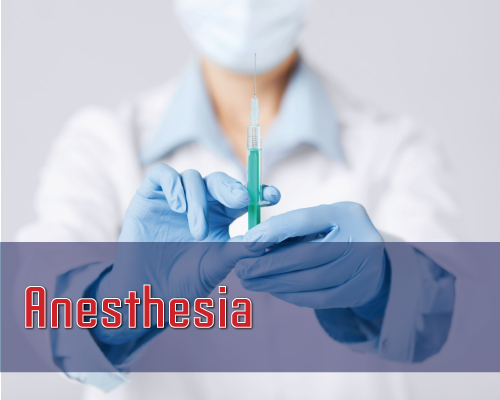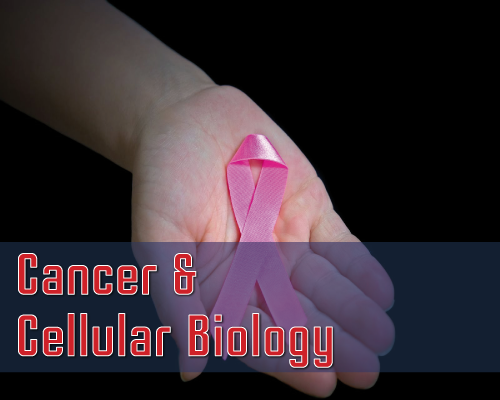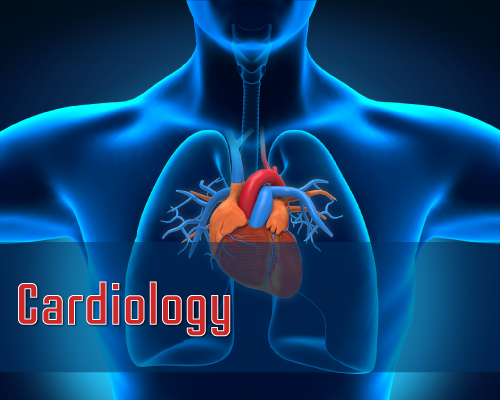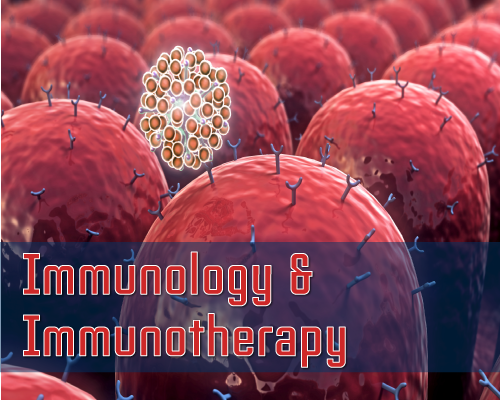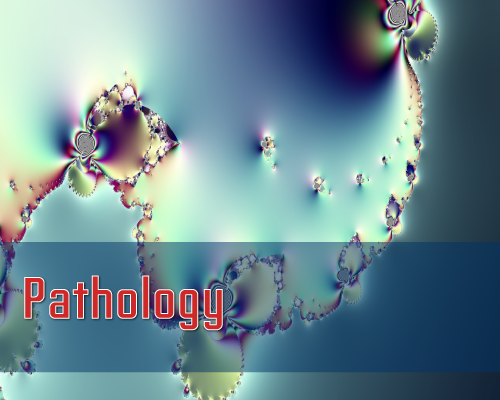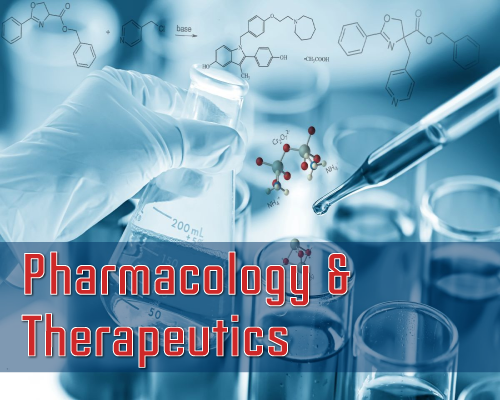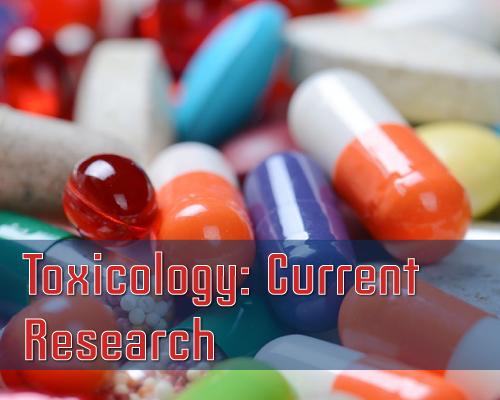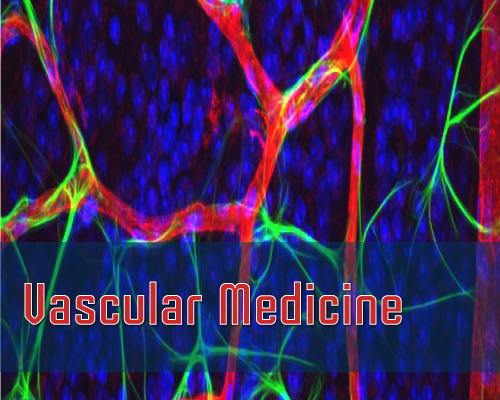Review Article
Functional Foods Tested In vivo and In vitro as A Complement or Substitution in the Pharmacological Treatment of Diabetes
Mariela Enriquez Acevedo, Ruth E Belmares Cerda* , Rosa M. Rodriguez Jasso, Araceli Loredo Trevino, Carolina Flores Gallegos, Ana V. Charles Rodriguez, Mildred I. M. Flores Verastegui, Mario A. Cruz Hernandez and Garza Juarez Aurora
Mariela Enriquez Acevedo1, Ruth E Belmares Cerda1*, Rosa M. Rodriguez Jasso1, Araceli Loredo Trevino1, Carolina Flores Gallegos1, Ana V. Charles Rodriguez2, Mildred I. M. Flores Verastegui2, Mario A. Cruz Hernandez2 and Garza Juarez Aurora3
1Autonomous University of Coahuila, Saltillo, Coahuila, Mexico
2University in Saltillo, Calzada Antonio Narro 1923, Mexico
3Autonomous University of Nuevo Leon, Facultad de Salud Publica y Nutricion, Mexico
*Address for Correspondence: Ruth E Belmares Cerda, Autonomous University of Coahuila, Blvd V Carranza e Ing. Jose Cardenas s/n Col. Republica C.P. 25280, Saltillo, Coahuila, Mexico, E-mail: ruthbelmares@uadec.edu.mx
Dates: Submitted: 14 September 2017; Approved: 10 October 2017; Published: 14 October 2017
Citation this article: Acevedo ME, Belmares Cerda RE, Rodriguez Jasso RM, Trevino AL, Gallegos CF, et al. Functional Foods Tested In vivo and In vitro as A Complement or Substitution in the Pharmacological Treatment of Diabetes. Sci J Food Sc Nutr. 2017; 3(1): 023-033.
Copyright: © 2017 Acevedo ME, et al. This is an open access article distributed under the Creative Commons Attribution License, which permits unrestricted use, distribution, and reproduction in any medium, provided the original work is properly cited.
Keywords: Diabetes; Functional food; Pharmacological treatment
Abstract
Diabetes is a chronic multi system disease, which consists of major complications largely influenced by glycemic values [1]. One therapeutic practice for the management of diabetes is by controlling postprandial hyperglycemia, along with changes in the life style, consumption of foods with low GI and consumption of drugs. Oral anti diabetic agents available on the market have benefits in the patient health, but scientific evidence of various long term use drugs states that they may have a wide range of negative effects. Recently, different researchers have been working with natural products called functional foods, or ingredients like plants, probiotics and prebiotics with bioactive compounds, which could be used as a raw material to convert this into a functional food and create a viable option for more powerful and safe anti diabetic therapy. In this review, we present the most current information of functional foods, or ingredients with bioactivity, as well as food with low GI, which could complement, or replace the different treatments in diabetes mellitus, tested in vivo and in vitro. Concluding, the studies presented in this paper, show different alternatives that would improve the patients’ nutrition and life quality but there is also required to continue investigating and testing to prove the functionality and improve the health of the population with diabetes.
Abbreviations
GI: Glycemic Index; HbA1c: Glycated Hemoglobin; PNPG: 4 Nitrophenyl β D Glucopyranoside; DMSO: Dimethyl sulfoxide; DNSA: 3,5 Dinitrosalicylic acid; GDRI: Glucose Diffusion Retardation Index; RINm5F: Rattus Norvegicus, Rat, Pancreas/Islet of Langerhans/Beta Cell
Units
Nm: nanometer; µg: microgram; mL: milliliter; G: gram; Kg: kilogram; µM: micromole; mM: milimol
Introduction
Diabetes Mellitus is a degenerative chronic disease and is originated because the pancreas doesn’t produce insulin or the insulin produced isn’t used with efficacy for the organism (insulin resistance). The reduced the ability of the organism to regulate the glucose level in the blood stream give as a result a number of major complications in the body such as damage to small blood vessels, neuropathy, diabetic foot syndrome, retinopathy, chronic renal damage accompanied by proteinury, liver diseases, macro angiopathy, difficulty to heal wounds, among others [2-8]. The classification of diabetes is based by the pathogenesis and treatment. Three categories were proposed, type 1, type 2, and gestational diabetes [9]. But in this article, we are addressing type 1 and 2. The type 1 is expressed by family heritage and the type 2 is characterized by a combination of a low secretory response by pancreatic β cells and a peripheral resistance to insulin action [8,10]. In the diabetes type I, or juvenile diabetes, it is caused by an autoimmune action of the immune system of the body that attacks the cells that produce the insulin. In the type 2 the unhealthy habits play an important role (smoke, drink, physical inactivity, stress, bad alimentation, etc.) this causes an increase in body weight causing obesity. The obesity is characterized by systemic inflammation, β cell dysfunction and leptin resistance. Accumulation of adipose tissue is associated to the expression of several pro inflammation genes that locally impair insulin signaling (Figure 1) [11-13]. This type of diabetes (type 2) affect more that 80% of all cases in Mexico [5]. One of the treatments for the diabetes type 1 is the insulin, because the body has stopped producing it, in addition to a suitable diet with foods with low GI [14]. One therapeutic practice to the management of diabetes type 2 is by controlling postprandial hyperglycemia, with changes in the life style (diet, exercise, low consume of salt, tabaco and alcohol) consumption of foods with low GI and consumption of drugs, drugs and therefore have improvements in the disease [2,11,15]. Oral antidiabetic agents available on the market for diabetes include, biguanides, sulphonylureas, thiazolidinediones, meglitinides and α amylase and α glucosidase inhibitors [16]. Although this drugs have benefits avoiding symptomatology, but scientific evidence of various drugs with said that the long term use of these may result in number so negative side effects for example, many of these antidiabetics drugs have side effects such as hypoglycemia, anemia, weight gain, and congestive heart failure (Figure 2) [10,13,17]. Recently, different studies have tested in vivo and in vitro natural products, especially foods (vegetables, fruits, legumes, etc.), which are now called functional foods which are foods that by virtue of the presence of physiologically active components, provide health benefits beyond the classical action of the nutrients they contain [18], as a possible option for more powerful and safe anti diabetic therapy, or ingredients like plants, probiotics (living microorganisms in food and dietary supplements that, can improve the health of the host [1]), prebiotics (non digestible ingredients present in foods that produce beneficial effects on the host, stimulating the growth of probiotics [19]) with bioactive compounds (chemical found in small amounts in plants and certain foods, fulfilling functions in the body that can promote good health [20]) which, when included in food convert this into a functional food, avoiding also the consequent diseases of this morbidity [10].
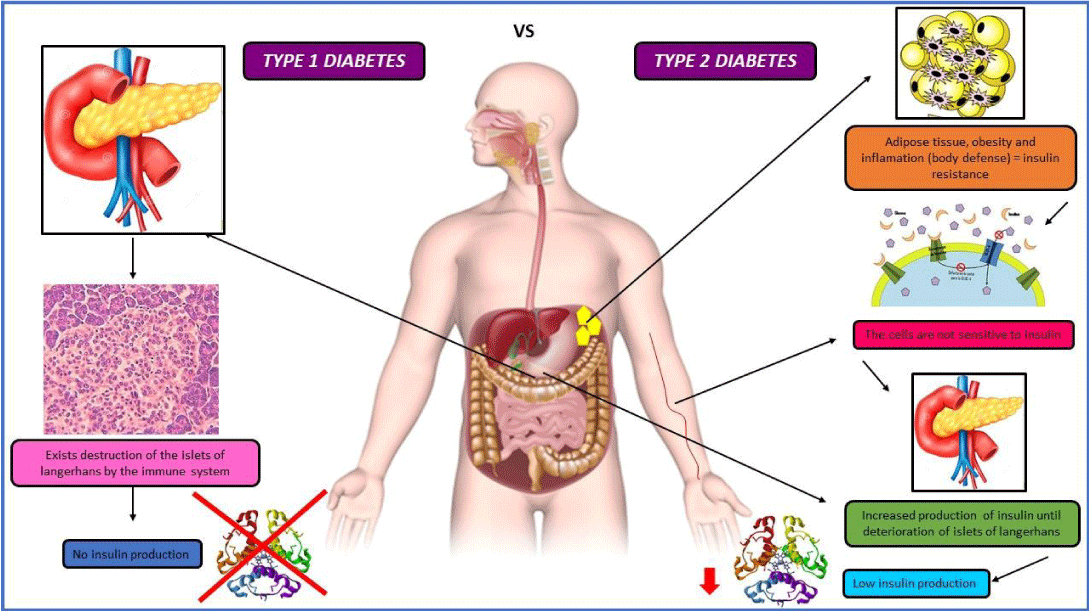 Figure 1: Factors for Diabetes. The figure talk about the differences of factors and what happens in diabetes type I and II [13].
Figure 1: Factors for Diabetes. The figure talk about the differences of factors and what happens in diabetes type I and II [13].
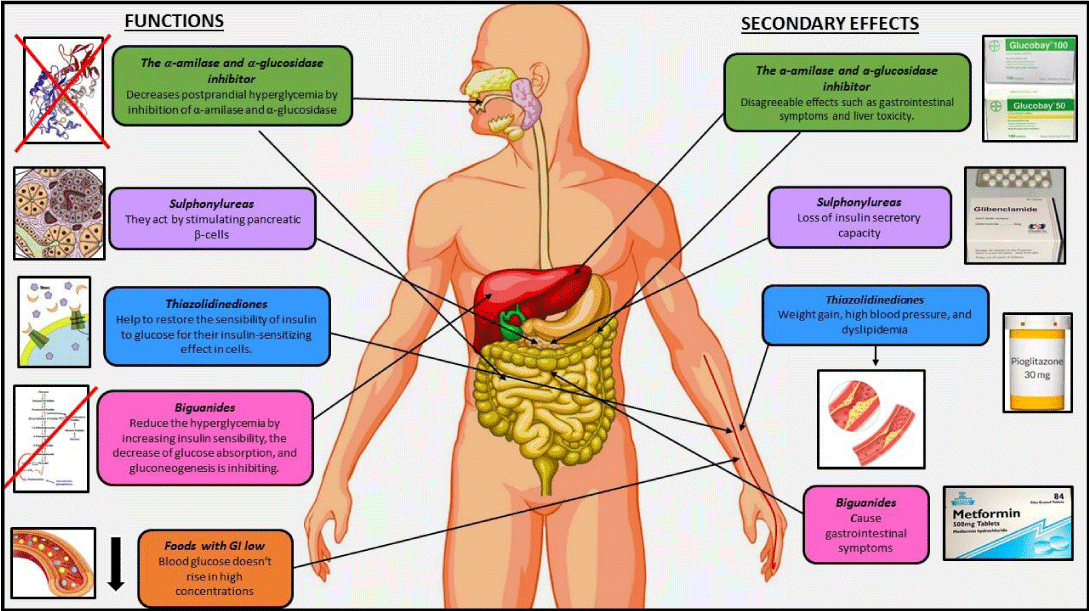 Figure 2: Secondary effects for anti diabetics drugs. This figure talk about the, positive and negative effects for different anti diabetics drugs [13].
Figure 2: Secondary effects for anti diabetics drugs. This figure talk about the, positive and negative effects for different anti diabetics drugs [13].
In this review, we present the most current information of functional foods, or ingredients with bioactivity, as well as food with low GI, which could complement, or replace the different treatments in diabetes mellitus, tested in vivo and in vitro.
Functional foods for the complement or substitution of sulphonylureas
The sulphonylureas like glibenclamide, glimeprimide, glyburide, clopropamide and glipecide are insulin secreting drugs and their act by stimulating pancreatic β cells. One secondary effect of sulphonylureas is the loss of insulin secretory capacity (Figure 2) [13,16,21]. By reviewing the literature, we founded that different foods have some bioactive components tested in vivo and in vitro that can provide this effect without causing secondary effects (Table 1).
| Table 1: List of functional food with sulphonylureas activities. | |||||
| Food | Part | Test | Experimented design | Results | Reference |
| Coriander | Seeds | In vivo | Supplementation for 30 day of 200 and 250 mg/kg of ethanolic extract of seeds in streptozotocin-diabetic mice. | Decrease in serum glucose concentration and increased activity of beta cells as compared to a diabetic control in the day 21. | Sahib et al., 2013 [23] |
| Green Tea | Leaf | In vivo | The streptozotocin-induced insulin resistant diabetic mice were submitted to an oral glucose tolerance test. One day the mice were fasted overnight before the test and ate glucose (1.5 g/kg) and they determined blood glucose after glucose administration. 2 days after that administrated for 4 weeks of green tea polysaccharide and on the day 28th of the experiment, the animals were sacrificed. | Show that compared with the diabetic control, the tea polysaccharide extracted groups could efficiently suppress the value and had a lower value than diabetic control, decrease blood glucose significantly. | Li et al., 2015 [24] |
| Probiotic Yogurt | Yogurt | In vivo | 64 patients between 30 and 60 years old were assigned in 2 groups, in the group 1 consumed 300g/ of probiotic yogurt with Lactobacillus acidophilus La5 and Bifidobacterium lactis Bb12, and the control group consumed 300 g/d of conventional yogurt for 6 weeks, and take fasting blood samples, anthopometric measurements and 24-h dietary recalls. | The probiotic yogurt decreased fasting blood glucose and hemoglobin A1c. | Ejtahed et al., 2012 [22] |
| Coccinia Grandis | Leaf | In vivo | This study determined the insulin secretion by RINm5F cells, the RINm5F insulinoma cells (105 cells/mL) Reading the absorbance in 450 nm, and the control was glibenclamide. | Show that the methanol extract from C. grandis increase in insulin secretion from 1.193 ± 0.18 mg/L to 1.098 ± 0.24 mg/L. |
Meenatchi, Purushothaman, & Maneemegalai, 2016 [21] |
| Soybean | Leguminous | In vivo | ----------------- | Shown that the insulin-stimulated glucose uptake and presents that the insulinotropic activity. | Sanjukta S and Rai AK, (2016) Kwon et al., 2011; H. J. Yang et al., 2013 [38–40] |
| D-allulose | Sugar | In vivo | Worked with rats with diabetes type 2, ate 13 weeks 5% of D-allulose in drinking water maintained blood glucose levels normally compared with the control that don’t consumed this sugar | 7 weeks after indicated that glucose tolerance was improved with a significant restoration of insulin secretion after glucose loading and it was due for the glucokinase in hepatocytes. | A. Hossain, Yamaguchi, Matsuo, Tsukamoto, & Toyoda, 2015; M. A. Hossain et al., 2011 [25,26] |
| Rice | Bran | In vivo | 1. Diets with whole grains reduce by 20-30% the risk of diabetes type 2. 2. Consumption for insulin-dependent diabetic. 3. Volunteers with diabetes type 2 divided in 2 groups, received 20g of rice bran stabilized and the other group placebo. |
1. Reduce the oxidative stress and inflammation. 2. Presented a reduction in glycosylated hemoglobin levels. 3. Showed that the first group lower significantly glycated hemoglobin, serum glucose. |
Belobrajdic & Bird, 2013; H.-H. Cheng et al., 2010; Qureshi, Sami, & Khan, 2002 [29–31] |
| Rice | Oil | In vivo | One diet with rice brain oil for rats improved lipid abnormalities. | Suppressed the hyperinsulinemic response and reduce the atherogenic index. | Lai, Chen, Chen, Chang, & Cheng, 2012 [27] |
| Rice | Smoke Hull | In vivo | The liquid rice hull smoked induced in mice in one dietary administration of 0.5 or 1% for 7 weeks. | Reduce the blood glucose, glucose tolerance and higher serum insulin levels comparted with the control group with a high-fat-diet. | J. Y. Yang, Kang, Nam, & Friedman, 2012 [32] |
| Seaweeds | Marine Plant (Leaf) | In vivo | A consumption of Spirulina species (8 g/d) in persons with diabetes type 2. | Reduce the plasma concentrations of triglycerides and inflammatory markers such as TNFα and IL-6 and increased plasma adiponectin concentrations. | Kumar & Brown, 2013; Lee, Park, Choi, Huh, & Kim, 2008; Nagai & Ito, 2013 [33–35] |
| Apples with L- arginine | Fruit | In vitro/In vivo | In vitro show cells were exposed to high glucose after with the apples in the vivo study diabetic groups received L-arginine or apple enriched with L-arginine or vehicle. | Exhibited reduction of 50% in the ingestion of L-arginine. Concentration of insulin was higher and longest in the apple enriched by L-arginine. | Escudero et al., 2013 [36] |
| Pumpkins | Vegetable | In vivo | One experiment with the exposure of Protein-bound polysaccharides (PBPP) in 5 groups 1) Group 1, 10 normal rats; 2) Group 2, 12 diabetic untreated rats; 3) Group3, 12 fed with 1000mg/kg of PPBP; 4) Group 4, 12 fed with 500mg/kg of PBPP and 5) Group 5, fed with 20 mg/kg of glibenclamide. | The results showed that the serum insulin tolerance and blood glucose in Group 1 is higher than group 2, the group 3 and 4 were a different treatment, but the fasting blood glucose levels were both significantly lower than those untreated diabetic rats and the same of group 5. In the group 3 presented excellent results compared with the group 4. Thank for this result it is said that PBPP can influence the effect of hypoglycemia and should use for some new anti-diabetic agents. | Adams et al., 2011 [37] |
Ejtahed et al. [22] found that consumption of prebiotic yogurt with Lactobacillus acidophilus and Bifidobacterium lactis for 6 weeks, decreases blood glucose as well as HbA1c. According to the author, there are foods in which an extra component is added to provide more benefits like probiotics. Sahib et al. [23] mentions that supplementation in mice with coriander decreased serum glucose concentration and increased beta cell production. Since this herb is a condiment, we need to add it to an integral pasta or bread, and convert in functional food. Li et al. [24] found that giving green tea to diabetic rats for 4 weeks, reduced blood glucose and it is a very popular leaf to prepare infusions, juice or supplements. Hossain et al. [25] discusses the benefits of D allulose and the same author in 2011 [26] worked with diabetic mice and mentions that they consumed D allulose for 13 weeks and maintained their normal glucose levels, this article is innovator as we can see other options for sweeteners that we could use at home in different foods. And Lai et al. [27] mentions that giving mice rice bran suppressed hyper insulinemia. All these articles are interesting, but didn’t test with people or cells. In the review by Friedman [28], rice which is very popular, presents good functionalities in different presentations, mentioning the authors Belobrajdic and Bird [29] who comments that rice reduces 20 to 30% of diabetes for the phytochemicals it owns, but this should be checked with more research. Qureshi et al. and Cheng et al. [30,31] found that giving patients rice bran for 60 days reduced HbA1c. Yang et al. [32] reports that giving smoked rice hull liquid to patients for 7 weeks decreases blood glucose and increase the insulin. Kumar and Brown [33] mention the properties of algae in which he talks about 2 studies, the first one by Lee et al. [34] found that the consumption of spirulina for 12 weeks reduced inflammation markers. Nagai and Ito [35] reported that supplementation in rats with seaweeds fortified with Mg for 60 days, decreased insulin concentration and body weight. Escudero et al. [36] mentioned that consumption of L arginine fortified apples for 17 days extended the effect of insulin. In summary, these articles show favorable results, but comparisons with drugs are needed to observe the similarity of the food with such drugs and that not only these foods contain nutritional properties, but functional to complement or substitute a pharmacological treatment. In the case of Meenatchi et al. [21] they determined the effect of the extract of Coccinia grandis leaves, in a study where they worked with suspended RINm5F cells in the extract supplemented with 10% FBS (Fetal Bovine Serum), 10 mm HEPES (4 (2 Hydroxyethyl) 1 Piperazine ethane sulfonic Acid) and 1 mm sodium pyruvate (200 mL) into 96 well plates. They found that it increased insulin secretion in cells, an interesting article because it was compared to glibenclamide, and gave beneficial results by increasing the level of insulin secretion. Therefore, we must to popularize this type of plants to take them in infusions or add them to dishes for the beneficial functions. Adams et al. [37], comment that the consumption of pumpkin causes hypoglycemic effects similar to glibenclamide and it was proven in this article. This crop is not very popular, only on special dates or in Mexican traditional candies. Finally, fermented soybean is mentioned in the review. In the review of Sanjukta and Rai [38] in which he mentions different articles such as Kwon et al. [39] and Yang et al. [40] they comment that the soybean causes the stimulation of the beta cells to produce insulin as well as actions in mice caused by isoflavones that are contained the soybean, but these articles must do more research and verify the benefits of this food with tests in vitro or in vivo.
Functional foods for the complement or substitution of thiazolidinediones
Different bioactive components tested in vivo and in vitro were founded in plants and foods that can provide the effect of the drug without causing the secondary effects of the thiazolidinediones (Table 2). These drugs (thiazolidinediones (pioglitazone and rosiglitazone)) helps to restore the sensibility of insulin to glucose for their insulin sensitizing effect in cells. But their consumption was associated with weight gain, high blood pressure, and dyslipidemia (Figure 2) [13,16,25]. In the review by Razmpoosh et al. [1], they mentioned antidiabetic effects in probiotics tested in vitro with mice and presented 2 articles for Tanida et al. and Tomaro et al. [6,41] that administered prebiotics in rats for 4 and 8 weeks showing changes in insulin sensitivity, and this bacteria with can help if added in foods. Kumar and Brown [33] they reviewed different articles on the benefits of seaweeds, but the most interesting was the one of Jeong et al. [42] who comments that consumption of seaweeds in diabetic rats suppresses adipose tissue and improves the use of blood glucose. Yuan et al. [43] comments that consumption of rice flour with selenium and resistant starch in diabetic rats for 4 weeks, lower blood glucose levels. As mentioned previously, they present good results and these foods are used in different cooked dish but there is no comparison with the drug or in patients to compare better or more verifiable results. For this reason the best project tested in mice was that of Chen and Pan [44] who commented that consumption of red mold dioscorea in diabetic mice compared to pioglitazone, has an insulin sensitivity of 18.6 40.4% being an excellent food, compared to pioglitazone with an insulin sensitivity of 52.8%. Although it is not a food widely used by society, could be popularized thanks to this type of studies. On the other hand, in the review of Lim et al. [45] they commented that vinegar has antidiabetic effects, and presented 2 articles by Mitrou et al. and Johnston et al. [46,47] where they found in patients that for 12 weeks consumed vinegar they reduced they HbA1c levels. It is interesting since they worked with humans and vinegar has great consumption in salads but should be tested using a drug to compare the results.
| Table 2: List of functional food with thiazolidinediones activities. | |||||
| Food | Part | Test | Experimented design | Results | Reference |
| Prebiotics | Prebiotics | In vivo | 1. Used lower dose of an injection of L. casei (1×108 Colony Forming Unit (CFU)/mL/rat). 2.Used a daily gavage of 1×1010 CFU/rat of L. fermentum 3. One consume of daily tablet of 1010 CFU/mL/rat of L. acidophilus. |
Shows significant changes in insulin sensitivity. | Razmpoosh, Mirmiran, Ejtahed, & Mirmiran, 2016; Tanida et al., 2014; Tomaro-Duchesneau et al., 2014 [1,6,41] |
| Seaweeds | Marine plant (Leaf) | In vivo | That in mice, the fucoxanthin presented in microalgae. | Improve glucose utilization and reduce the white adipose tissue weigh. | Jeong et al., 2007; Kumar & Brown, 2013 [42] |
| Vinegar | Fermented food | In vivo | 1.Patients supplementing with vinegar 2. Consume in patients of 1 and 2 g of acetic acid, having been congested with 50–100 g of available carbohydrate. 3. The consumption of vinegar in 12 weeks’ trial in 24 type 2 diabetes patients, two daily doses of 1.4 g acetic acid. |
1.Glycemia reduction 2. Moderate or nonsignificant lowering of postprandial glycemia. 3. Demonstrated that it a small reduction in Hb1C levels. |
Johnston, White, & Kent, 2009; Lim, Henry, & Haldar, 2016; Mitrou, P., Raptis, . E., Lambadiari, V., Boutati, 2010 [45-47] |
| Rice | Flour | In vivo | In two groups one induce-sptreptozin an obesity, and other normal group of rats and ate 4 g mixed with 8mL distilled water of NRF (Normal rice flour), NR-RS (normal rice flour with a high content of resistant starch) and SR-RS (selenium and Se-rich rice flour with a high content of resistant starch) by intragastric administration for 4 weeks. fter the 4-week treatment, all mice were sacrificed, and blood was collected and Serum insulin contents. | Fasting blood glucose levels of the mice in the NR-RS and SR-RS were significantly lower than diabetic in NRF, NR-RS and SR-RS. SR-RS had a better anti-diabetic for lower the body weight and glucose and serum levels in the blood. | Yuan, Wang, Chen, Zhu, & Cao, 2016 [43] |
| Red Mold Dioscorea |
Vegetable | In vivo | In diabetic mice ate RMD, RMD with pioglitazone, and pioglitazone alone dividend in 8 groups, blood samples were collected from the tail vein at 0 minute, 30 minutes, 60 minutes, 90 minutes, 120 minutes, 150 minutes, and 180 minutes after glucose administration. fter 8 weeks, the rats were sacrificed. | The results demonstrated one increment significantly by 18.6-40.4% (RMD) 64.0-100.0% ((RMD) with pioglitazone) and 52.8% (pioglitazone alone), respectively. | C. Chen & Pan, 2015 [44] |
Functional foods for the substitution or complement of biguanides
The biguanides reduce the hyperglycemia by the increasing of insulin sensibility, the decrease of glucose absorption, and the inhibition of hepatic gluconeogenesis. Metformin is the most used commercial drug because is unique in its mechanism of action, but the use of this drug cause gastrointestinal symptoms (Figure 2) [13,16]. Some medicinal plants and natural foods tested in vivo and in vitro have anti diabetic effects similar to biguanides (Table 3).
In the article of Cheng et al. [48] they mentioned that consumption of red lettuce for 8 days presented sensibility of insulin and reduction of hyperglycemia, being an excellent functional food for its great consumption in the population. Dionisio et al. [49] commented that the consumption of Cashew apple and yacon beverage, both in diabetic and healthy rat presents lower levels in blood glucose, and this new functional food created to benefit the population can be popularized. Hsieh et al. [50] mentioned that the consumption of L. reuteri and L. plantarum in mice for 8 weeks presented significative results in the insulin resistance, being these bacteria beneficial different foods, but the last 2 articles should also be tested in patients. Yang et al. [51] said that the consumption of liquid rice hull smoke in rats for 2 weeks causes decrement of blood glucose, high levels of serum insulin and restauration of the glycogen hepatic. Cheng et al. [48] used metformin for comparison and observed related results with red lettuce, whereas the other 3 authors, presented beneficial results, but they must compare with drugs, and using the foods and probiotics as a substitute for the drug. Venu and Jayanty [16] used a spectrophotometric method modified for 96 well micro plates, based one reaction of the guanidine group with a naphthol diacetyl at an alkaline pH, the lecture was at absorbance of 550 556nm, in which they compared curry leaves, fenugreek, bitter gourd, garlic, potato and sweet potato with metformin and found that curry leaves, fenugreek, bitter gourd and potato presented more biguanide related compounds than metformin. But it would be convenient that this food will be studied in vivo in mice or people, and increase the demand of these types of food.
| Table 3: List of functional food with biguanides activities. | |||||
| Food | Part | Test | Experimented design | Results | Reference |
| Red Lettuce | Vegetable | In vivo | Old male obesity hyperglycemic and insulin resistant mice were in a different diet after for 14 weeks were gavaged daily with RSL (NFR-S-4) at a dose of 100 or 300 mg/kg suspended in water or vehicle as a negative control (n=8 per treatment group). A Metformin group (300 mg/ kg) was included as positive control (n=4). | Oral administration of Red Lettuce (100 or 300 mg/kg) for up to eight days acutely reduced hyperglycemia and improved insulin sensitivity in high fat diet-induced obese hyperglycemic mice. | D. M. Cheng et al., 2014 [48] |
| Cashew-apple and yacon beverage | Beverage | In vivo | Male rats were divided in five groups control (healthy mice), non-treated diabetic, and diabetic treated with 100, 200 or 400 mg of lyophilized functional beverage per kg/day. | They don’t have a significance difference in the treatments that received the beverage, but el group one shows lower values of blood glucose levels. | Dionísio et al., 2015 [49] |
| Fenugreek, curry leaves, bitter gourd, garlic potato tubers and sweet potato | Leaf and vegetables | In vitro | Biguanide related compounds (BRCs)were quantified using a spectrophotometric method and a calibration curve for metformin was prepared at 550 nm | The results mentioned that highest amount of biguanide related compounds (BRCs) was found in curry leaves followed by fenugreek, bitter gourd and potato. Garlic and sweet potato contained very low or negligible amounts of BRCs. | Venu & Jayanty, 2013 [16] |
| Rice | Liquid smoke | In vivo | There evaluated one diet with 0.5 or 1% of rice hull smoked liquid (v/w) and sterile tap water ad libitum for 2 weeks (n =10), then mice were sacrificed and blood samples were collected, and the liver and pancreas were excised in alloxan-induced diabetic mice. | Caused a decrease in blood glucose and increases in both serum insulin and hepatic glycogen levels and restored the liver and the islet to normal level. | Jun Young Yang, Kang, Nam, & Friedman, 2012 [32] |
| Prebiotics | Prebiotics | In vivo | Used L. reuteri (2×109 Colony Forming Unit (CFU)/rat/day) and L. plantarum (1×109CFU/rat/day) for 14 and 8 weeks. | The results reported that significant alterations in insulin resistance levels. | Hsieh et al., 2013 [50] |
Functional foods for the complement or substitution of the α amylase and α glucosidase inhibitor
In the literature exist different foods and functional ingredients tested in vivo and in vitro that were investigated to check if they have the potential to inhibit the enzymes α amylase and α glucosidase (Table 4) so can complement or replace the drugs used as acarbose and migitol which decrease postprandial hyperglycemia by the inhibition of those enzymes. These drugs present association with disagreeable effects such as gastrointestinal symptoms and liver toxicity, for this reason is sought to supplement or replace them to avoid these side effects (Figure 2) [2].
| Table 4: List of functional food with the α-amylase and α-glucosidase inhibitoractivities. | |||||
| Food | Part | Test | Experimented design | Results | Reference |
| D-allulose | Sugar | In vivo | 1. One oral glucose test, from 2 g/kg sucrose or maltose to 0.2 g/kg D-allulose. 2. One variety diurnal with two 1-h feedings per day with 5% D-allulose diet. |
1. Showed lower glucose concentration with D-allulose. 2. Showed lower levels of plasma glucose than regular diet. |
Caspary & Graf, 1979; A. Hossain et al., 2015; Matsuo & Izumori, 2006; Puls & Keup, 1975 [25,52–54] |
| Roselle Stevia and citric acid in beverage | Beverage | In vitro | Evaluation of inhibition of α-amylase and α-glucosidase for methods of different authors (Worthington (1993) [68] and Apostolidis, Kwon, and Shetty (2007) [69]), respectively | The results showed 37% and 25%, of inhibition respectively, this inhibition is attributed to the presence of hibiscus acid, cyanindin-3-glucoside and other phenolic compounds. | Pérez-Ramírez, Castaño-Tostado, De León, Rocha-guzmán, & Reynoso-Camacho, 2015 [56] |
| Olive oil | Oil | In vitro | Evaluate the type of inhibition, about the mechanism of the OA/α-glucosidase interaction. The α-amylase inhibition was evaluated for the method Sigma–Aldrich, and the α-glucosidase was evaluated from the protocol by Kang et al. (2011) [70] to 96-well micro- plates, and the control for calibration was acarbose. | The results manifested inhibition of α-amylase of 27.2 and 30.1% with 5.0 µM–1.0 µM of olive oil and inhibition of α-glucosidase of 50% with 10.11 ± 0.30 µM of olive oil. | Castellano et al., 2016 [60] |
| Wheat | Cereal | In vitro | Was planned to formulate low cost wheat based composite chapatis flours containing barley, oat and psyllium as functional ingredients. The composite flours were formulated using psyllium, barley and oat at two different levels and their digestibly characteristics were studied using amylolysis kinetics employing porcine pancreatic α-amylase in vitro and evaluate the amylolysis kinetics and glucose diffusion retardation index (GDRI) that were determined by the method of Ou et, al. (2001) [71] end the control was wheat flour (100 %). | The results presented that the different combinations of flours had acceptable sensory qualities and had significantly lower values for total starch and inhibited α-amylase as reflected by lower glucose diffusion and significantly higher glucose dialysis retardation index (GDRI) compared to control. | Ahmed & Urooj, 2015 [58] |
| Melon Seeds | Seeds | In vitro | The ethanol extract of melon seeds was evaluated enzymatic inhibition by the method of Kwon, Apostolidis, and Shetty (2008) [72] with slight modification for α-glucosidase for inhibition and Ali, Houghton, and Soumyanath (2006) [73] with minor modification for α-amylase. | The results showed of 35.3% for α-glucosidase and 61.8% for α-amylase. | L. Chen & Kang, 2013 [2] |
| Quinoa | Cereal | In vitro | Starch of cooked quinoa were 22, 32 and 45% hydrolyzed and presented that the more cooked the quinoa was it was more digestible. | Thanks, of the protein matrix that surrounds starch granules of quinoa the hydrolysis of α-amylase can improve the degree of starch hydrolysis. | Arneja, Tanwar, & Chauhan, 2015; Ruales & Nair, 1994 [62,63] |
| Sugarcane Molasses | Fruit | In vivo | Was designed to assess the inhibitory effect of sugarcane molasses on α-glucosidase and α-amylase determined as Adisakwattana et al. (2009) [74] with modifications. | The results showed that 20 mg/mL of the extract significantly reduced α-glucosidase activity to 30 %. At 10 mg/mL, it decreased α-amylase activity to 25 %. 40 % of the maximum in the presence of 8 mg/mL of the extract in α-glucosidase and 27 % of the maximum corresponding to inhibitor concentration of 8 mg/mL in α-amylase. | Kong, Yu, Zeng, & Wu, 2016 [59] |
| Stevia in bread | Bread | In vitro | Functional bread with 50 % of sugars replaced with S. rebaudiana extract was compared with traditional wheat bread and evaluated the inhibition of α-amylase and α-glucosidase. | The results obtained inhibition of 50% with 198.40 μg/mL in α-amylase inhibition and one inhibition of 50% with 596.77mg/mL in α-glucosidase inhibition. | Ruiz-Ruiz, Moguel-Ordoñez, Matus-Basto, & Segura-Campos, 2015 [75] |
| Alga Hizikia Fusiformis | Marine plant (leaf) | In vitro | Demonstrate the anti-diabetic and anti-inflammatory activities of the methanolic (MeOH) extracts of H. fusiformis and supports use of this seaweed as a functional food and a potential anti-diabetic with inhibition of α-glucosidase | The results obtained inhibition of with 50% 1,404.53 ± 124.08 μg/mL. | Han, Ali, Woo, Jung, & Choi, 2015 [55] |
| Irish seaweed | Marine plant (Leaf) | In vitro | Evaluated extracts of seaweeds for α-amylase and α-glucosidase inhibitory effects. Cold water and ethanol extracts of 15 seaweeds were initially screened and from this, five brown seaweed species were chosen. | Extracts of Ascophyllum nodosum had the strongest α-amylase inhibitory effect with 505 values of 53.6 and 44.7 µg/ml, respectively. The extracts of Fucus vesiculosus Linnaeus were found to be potent inhibitors of α-glucosidase with 50% values of 0.32 and 0.49 µg/ml | Lordan, Smyth, Soler-Vila, Stanton, & Ross, 2013 [61] |
| Solanum nigrum | Leaf | In vitro | Was investigated the antidiabetic activity of the leaf extract of (SN) for inhibition of α-amylase and α-glucosidase. | The results presented inhibition of α-amylase of IC50-39±0.06 µg/mLG1 and inhibition of α-glucosidase of IC50 -78.8±0.7 µg/mLG1. | Dasgupta, Muthukumar, & Murthy, 2016 [17] |
In the review of Hossain et al. [25] he continues to enumerate the benefits of D allulose and includes the studies of Caspary and Granf, Puls and Keup, Matsuo and Izumory [51-53] who report that a consumption of 0.2g/kg of this type of sweetener in people, helps to digest the starch more slowly and consequently level of blood glucose decreases. But it was not compared with an inhibitory drug to see the different responses in the body. Han et al. [54] worked with α glucosidase inhibition by algae, their research consisted of using spectrophotometry with one reaction mixture containing phosphate buffer (pH 6.8), pNPG, and the sample (test concentration dissolved in DMSO) and it was added to each well, followed by an α glucosidase and acarbose positive control, to observe the anti-diabetic potential of algae, showing good inhibition results, 50% with 1,404.53 ± 124.08 μg/mL, making more attractive the algae consumption. Pérez Ramírez et al. [55] created a drink of roselle, Stevia and citric acid and observed the antidiabetic effect that presented, performed an enzymatic inhibition assay of α glucosidase, like the previous one, as well as an inhibition of the enzyme α amylase which consisted in adding α amylase in sodium phosphate buffer (pH 6.9), to the beverage sample and incubated for 10 min at 25°C. after that a starch solution in sodium phosphate buffer was added and incubated at 25°C for 10 min, the reaction finished by adding DNSA, and it showed good inhibition results of 25% and 37% for each enzyme, being promising results since this drink is very consumed by the population, giving it an extra benefit for people with diabetes. Ruiz Ruiz et al. [56], worked as well with enzymatic inhibitions but formulating a Stevia bread, obtaining 50% inhibition result with 198.40 µg/mL in α amylase inhibition and inhibition of 50% with 596.77 µg/mL for α glucosidase and it is considered that this power of inhibition is thanks to Stevia, making this a good bread to commercialize. Ahmed and Urooj [57] also worked with bread by adding functional ingredients according to the literature (psyllium, barley and oat) but performing an amylolysis kinetics assay employing porcine pancreatic α amylase in vitro and evaluate the amylolysis kinetics and GDRI having effective results such as lower glucose diffusion and significantly higher GDRI. In the study of Kong et al. [58] they comment that the famous sugarcane molasses, not very much used, only in Mexico’s traditional food, was tested to the same enzymatic inhibition with some modifications of temperatures or quantities, and presented an inhibition of α glucosidase of 30% with 20 mg/mL and 25% α amylase with 10 mg/mL. Dasgupta et al. [17] found that the Solanum nigrum leaf which we can use as infusion or take the extract diluted with water, or added in foods, presented an inhibition of α amylase of 50% with 39 ± 0.06 μg/mL and inhibition of α glucosidase of 50% with 78.8 ± 0.7 μg/mL. But all these articles were not compared to some medicament like acarbose, to observe the differences but medicaments in this case can’t be replaced with the alternative foods until more research is done. The best articles that performed enzymatic inhibition by calibrating and comparing the product with a drug that causes enzymatic inhibition, were the ones by in Castellano and Chen et al. and Kang et al. [2,59] which showed inhibition and compared with acarbose drug, resulted in inhibition of 27.2% with 5.0 μM 1.0 µM and inhibition of α glucosidase of 50% with 10.11 ± 0.30 μM with olive oil, and 35.3% for α glucosidase and 61.8% for α amylase with melon seeds, so we should take advantage of the seeds and not only eat the fruit, as well as not only use the olive oil in salads also in the meals that are prepared at home to be able to complement the treatments with drugs. In the article of Lordan et al. [60] they worked with seaweeds too, but from Ireland and compared with acarbose, they found that Ascophyllum nodosum had the strongest α amylase inhibitory effect with 50% values of 53.6 and 44.7 µg/mL, respectively and the extracts of Fucus vesiculosus Linnaeus were potent inhibitors of α glucosidase with 50% values of 0.32 and 0.49 µg/mL. Arneja et al. review and Ruales and Nair article [61,62] mention the benefits of the quinoa but does not present experimentation, only that the more cooked it is this cereal there is a greater digestion of the starch but this one must check with more investigation.
Foods with low GI
In the literature, there are different foods investigated and tested in vivo with low glycemic index potential, this type of foods is crucial to health, because the blood glucose doesn’t rise in high concentrations (Table 5). The GI of a food is determined by several factors that affect the intestinal digestion, including fiber, and moisture content, amylase, cooking time, processing methods, ingredients, etc. and if the food has fiber it contributes to low GI (Figure 2) [13,63].
| Table 5: List of functional food with low GI. | |||||
| Food | Part | Test | Experimented design | Results | Reference |
| Functional bread | Bread | In vivo | The first experiment implicated 50g of three types of steamed bread (Jizi439 and Chu20), and one mixture of different white grain wheat varieties fed to 10 normal weight young healthy subjects. They monitoreated the plasma glucose levels at 15, 30, 45, 60, 120 min after eating, Glucose was the control test and glycemic index (GI) was calculated for test meal. And the second experiment was in 10 people with type 2 diabetics ate 50g (bread made from Jizi 439 and the mixture of white grain bread wheat and buckwheat) and take the plasma glucose two hours thereafter. | The results showed that the first experiment the bread made from Jizi439 has the GI significantly lower and reduce the increase plasma glucose, than that of Chu20 and the mixture. In the second experiment the Jizi439 incremented 2.46mmol/L which was significantly lower than that of the mixture of white wheat. | Su-Que et al., 2013 [65] |
| Thempla with apple pomaces, papaya peels and watermelon | Cereal with fruit | In vivo | Use differents inredients tomake the thempla and also included different fruits and evaluated the acceptation and the glycemic index for determination of available starch (AS); and (2) hydrolysis index (HI). | The results showed that the thempla contains one 68.1 on glycemic index and the addition of fruits changes this GI to 63.38 in apples, 55.24 in papaya peels and 55.29 in watermelon respectively. | Waghmare & Arya, 2014 [64] |
| Vinegar | Fermented food | In vivo | --------- | Showed that the vinegar lowers the index glycemic in the foods. In diabetes type 2 observed a one increment in peripheral glucose uptake and significant reduction in arterial plasma insulin, suggesting a one better insulin sensitivity |
Mitrou et al., 2015 Lim et al., 2016 [45,67] |
| Oat Beverage | Beverage | In vivo | In the study, two ocassions subjects were asked to arrive early. In the firt visit they tried a white bread and water for the control to determined the standar food glycemic index. In the second visit was the same protocol but in this case tried the oat-based beverage and their calculated the glicemic index. | The results mostrated that the glicemic index of the beverage was of 38.6 ± 8.7 been a low glicemic index. | Méndez López et al., 2016 [66] |
In the article by Su que et al. [64] they investigated with different formulations of bread including white grain bread wheat and buckwheat, resulting in a low GI, consequently lowering blood glucose, which could be marketed. In the article Waghmare and Arya [65] proved a very popular food in India called Thempla based on a main ingredient called fenugreek, adding fruits to add value by lowering their GI, especially papaya and watermelon, resulting in that both the product and fruits would help diabetic people. In the article by Méndez Lopez et al. [65], as well as working with patients in the same way, with a one beverage with the very beneficial and popular cereal oatmeal, showing a low GI of 38.6, concluding that the functional properties of oats are improved in the standard drink because of their diminished effect on postprandial glucose response for home use. In the review by Lim et al. [45] as in other subthemes mention the benefits of vinegar, one of which, when included in foods, lowers their GI and in the article by Mitrou et al. [66] says that vinegar in diabetic patients reduces plasma insulin.
Conclusion
In conclusion, the evidence suggests that there are different foods, some commonly used and others not demanded, as different alternatives that can improve the nutrition and quality of life of patients complementing the treatment of diabetes, avoiding the complications resulting from an out of control metabolism. Although some studies are deficient because they do not compare to controls and drugs, as well as both tests were not done (in vivo and in vitro), they should be performed to catalog a food as functionally supported by scientific evidence. Based on the above it is necessary to continue researching and testing both in vivo and in vitro foods, evaluating their functionality, to complement the pharmacotherapy and in the future, can replace the pharmacological treatments of diabetes helping to improve the health of the population.
Acknowledgment
We would like to thank CONACYT for its support the investigation research in Mexico as well as the UAdeC that opened the doors to undertake new knowledge of the teachers and colleagues, and especially the family for all their support.
References
- Razmpoosh E, Mirmiran P, Ejtahed H S, Mirmiran P. Probiotics as beneficial agents in the management of diabetes mellitus : a systematic review. Diabetes Metab Res Rev. 2016; 32: 143 68. https://goo.gl/Lv7eY4
- Chen L, Kang Y. In vitro inhibitory effect of oriental melon (Cucumismelo L . var . makuw a Makino) seed on key enzyme linked to type 2 diabetes Assessment of anti diabetic potential of functional food. J Funct Foods. 2013; 5: 981-986. https://goo.gl/3HuXBt
- Mohamed S. Functional foods against metabolic syndrome (obesity, diabetes, hypertension and dyslipidemia) and cardiovasular disease. Trends Food Sci Technol. 2014; 35: 114 28. https://goo.gl/UZvNpR
- Kaul K, Tarr JM, Ahmad SI, Konher EM, Chibber R. Introduction to Diabetes Mellitus. Adv Exp Med Biol. 2012; 771: 1-11. https://goo.gl/JzfKzb
- Casanueva E, Kaufer M, Perez Lizaur AB, Arroyo P. Nutriologia Medica. Panamerica. Mexico. 2010.
- Tanida M, Imanishi K, Akashi H, Kurata Y, Chonan O, Naito E, et al. Injection of Lactobacillus casei strain shirota affects autonomic nerve activities in a tissue specific manner, and regulates glucose and lipid metabolism in rats. J Diabetes Investig. 2014; 5: 153-161. https://goo.gl/4Qu1GX
- Cianfrone P, Simeoni M, Comi N, Piraina V, Talarico R, Cerantonio A, et al. How to improve duration and efficiency of the antiproteinuric response to Ramipril: RamiPROT-a prospective cohort study. J Nephrol. 2017; 30: 95-102. https://goo.gl/4RvJKv
- Ballali S, Lanciai F. Functional food and diabetes: a natural way in diabetes prevention? Int J Food Sci Nutr. 2012; 63: 51-61. https://goo.gl/uRvXsq
- De Faria Maraschin J. Clasification of Diabetes. In: Ahmad SI, editor. Diabetes An Old Dis. a New Insight. Landes Bio, Springer. 2013; 129. https://goo.gl/42EKXs
- Kazeem MI, Davies TC. Anti diabetic functional foods as sources of insulin secreting, insulin sensitizing and insulin mimetic agents. J Funct Foods. 2016; 20: 122-138. https://goo.gl/NjSaqW
- Damon S, Schatzer M, Ho J, Tomasec G, Hoppichler F. Nutrition and diabetes mellitus : an overview of the current evidence. Wien Med Wochenschr. 2011; 161: 282-288. https://goo.gl/u2CvGT
- Kahn SE, Cooper ME, Del Prato S. Pathophysiology and treatment of type 2 diabetes : perspectives on the past, present , and future. Lancet. 2014; 383: 1068-1083. https://goo.gl/9qnjGT
- Shutterstock. Imagenes Libr Regalias n.d.
- Diseases NI of D and D and K. Diabetes medicines. Heal Inf. 2013; 1-60. https://goo.gl/TVT6dM
- Foster Powell K, Holt SH, Brand Miller JC. International table of glycemic index and glycemic load. Am J Clin Nutr 2002; 76: 5-56. https://goo.gl/hCzTmv
- Venu P, Jayanty SS. Biguanide related compounds in traditional antidiabetic functional foods. Food Chem 2013; 138: 1574-1580. https://goo.gl/yj1qbb
- Dasgupta N, Muthukumar SP, Murthy PS. Solanum nigrum Leaf : Natural Food against Diabetes and its Bioactive Compounds. Res J Med Plant. 2016; 10: 181-93. https://goo.gl/fYbyjh
- Aranceta J, Gil A. Alimentos funcionales y salud en las etapas infantil y juvenil. Panamerica. Espana: 2010. https://goo.gl/tUL6Ni
- Olveira Fuster G, Gonzalez Molero I. Probioticos y prebioticos en la practica clinica. Nutr Hosp. 2007; 22: 26-34. https://goo.gl/2mB5M3
- Institutos Nacionales de la Salud de EE.UU. NIH Instituto Nacional del Cancer. Dicc Del Cancer2017.
- Meenatchi P, Purushothaman A, Maneemegalai S. Antioxidant, antiglycation and insulinotrophic properties of Coccinia grandis (L) in vitro : Possible role in prevention of diabetic complications. J Tradit Chinese Med Sci. 2016; 7: 54-64. https://goo.gl/R626AV
- Ejtahed HS, Mohtadi nia J, Homayouni rad A, Niafar M, Asghari jafarabadi M, Mofid V. Probiotic yogurt improves antioxidant status in type 2 diabetic patients. Nutrition. 2012; 28: 539-543. https://goo.gl/i2TQiY
- Sahib NG, Anwar F, Gilani A, Hamid AA, Saari N, Alkharfy KM. Coriander (Coriandrum sativum L .): A Potential Source of High Value Components for Functional Foods and Nutraceuticals A Review. J Phyther Res. 2013; 27: 1439-1456. https://goo.gl/cqUPmZ
- Li S, Chen H, Wang J, Wang X, Hu B, Lv F. Involvement of the PI3K / Akt signal pathway in the hypoglycemic effects of tea polysaccharides on diabetic mice. Int J Biol Macromol. 2015; 81: 967-974. https://goo.gl/UDSjPX
- Hossain A, Yamaguchi F, Matsuo T, Tsukamoto I, Toyoda Y, Ogawa M, et al. Rare sugar D allulose : Potential role and therapeutic monitoring in maintaining obesity and type 2 diabetes mellitus. Pharmacol Ther. 2015; 155: 49-59. https://goo.gl/5Agjaq
- Hossain MA, Kitagaki S, Nakano D, Nishiyama A, Funamoto Y, Matsunaga T, et al. Rare sugar D psicose improves insulin sensitivity and glucose tolerance in type 2 diabetes Otsuka Long Evans Tokushima Fatty (OLETF) rats. Biochem Biophys Res Commun. 2011; 405: 7-12. https://goo.gl/6aqEGi
- Lai M H, Chen Y T, Chen Y Y, Chang J H, Cheng H H. Effects of rice bran oil on the blood lipids profiles and insulin resistance in type 2 diabetes patients. J Clin Biochem Nutr 2012; 51: 15-18. https://goo.gl/qSeibv
- Friedman M. Rice Brans, Rice Bran Oils, and Rice Hulls: Composition, Food and Industrial Uses, and Bioactivities in Humans, Animals, and Cells. J Agric Food Chem 2013; 61: 10626-10641. https://goo.gl/FV3iiu
- Belobrajdic DP, Bird AR. The potential role of phytochemicals in wholegrain cereals for the prevention of type 2 diabetes. Nutr J. 2013; 12: 62. https://goo.gl/LeZEo4
- Qureshi AA, Sami SA, Khan FA. Effects of stabilized rice bran, it’s soluble and fiber fractions on blood glucose levels and serum lipid parameters in humans with diabetes mellitus Types I and II. J Nutr Biochem 2002; 13: 175-187. https://goo.gl/1vtM4d
- Cheng H H, Huang H Y, Chen Y Y, Huang C L, Chang C J, Chen H L, et al. Ameliorative effects of stabilized rice bran on type 2 diabetes patients. Ann Nutr Metab. 2010; 56: 45-51. https://goo.gl/cdmKM4
- Yang JY, Kang MY, Nam SH, Friedman M. Anti diabetic Effects of Rice Hull Smoke Extract in Alloxan Induced Diabetic Mice. J Agric Food Chem. 2012: 60; 87-94. https://goo.gl/HKJT8c
- Kumar SA, Brown L. Seaweeds as potential therapeutic interventions for the metabolic syndrome. Endocrinol Metab Disord. 2013: 14; 299-308. https://goo.gl/Lnv37L
- Lee EH, Park J E, Choi Y J, Huh K B, Kim W Y. A randomized study to establish the effects of spirulina in type 2 diabetes mellitus patients. Nutr Res Pract. 2008; 2: 295-300. https://goo.gl/cndbsK
- Nagai N, Ito Y. Effect of magnesium ion supplementation on obesity and diabetes mellitus in Otsuka Long Evans Tokushima Fatty (OLETF) rats under excessive food intake. J Oleo Sci. 2013; 62:403-408. https://goo.gl/cBwoJ5
- Escudero A, Petzold G, Moreno J, Gonzalez M, Junod J, Aguayo C, et al. Supplementation with apple enriched with L arginine may improve metabolic control and survival rate in alloxan induced diabetic rats. Bio Factors. 2013; 39: 564- 574. https://goo.gl/FRmx9r
- Adams GG, Imran S, Wang S, Mohammad A, Kok S, Gray DA, et al. The hypoglycaemic effect of pumpkins as anti diabetic and functional medicines. Food Res Int. 2011; 44: 862-867. https://goo.gl/N2DPw4
- Sanjukta S, Rai AK. Production of bioactive peptides during soybean fermentation and their potential health benefits. Trends Food SciTechnol. 2016; 50: 1-10. https://goo.gl/VVN7gK
- Kwon DY, Hong SM, Ahn IS, Kim MJ, Yang HJ, Park S. Isoflavonoids and peptides from meju, long term fermented soybeans, increase insulin sensitivity and exert insulin tropic effects in vitro. Nutrition. 2011; 27: 244-252. https://goo.gl/3Jx9PY
- Yang HJ, Kim HJ, Kim MJ, Kang S, Kim DS, Daily JW, et al. Standardized chungkookjang, short term fermented soybeans with Bacillus licheniformis, improves glucose homeostasis as much as traditionally made chungkookjang in diabetic rats. J Clin Biochem Nutr. 2013; 52: 49-57. https://goo.gl/ws4LDA
- Tomaro Duchesneau C, Saha S, Malhotra M, Jones ML, Rodes L, Kahouli I, et al. Effect of orally administered L. Fermentum NCIMB 5221 on markers of metabolic syndrome: an in vivo analysis using ZDF rats. Appl Microbiol Biotechnol. 2014; 98: 115-126. https://goo.gl/a9rH6e
- Jeong Y T, Kim YD, Jung Y M, Park D C, Lee D S, Ku S K, et al. Low molecular weight fucoidan improves endoplasmic reticulum stress reduced insulin sensitivity through AMP activated protein kinase activation in L6 myotubes and restores lipid homeostasis in a mouse model of type 2 diabetes. Mol Pharmacol. 2013; 84: 147-157. https://goo.gl/bgs5HL
- Yuan H, Wang W, Chen D, Zhu X, Cao S. Characterization of resistant starch from Se rich rice flour and its anti diabetic effect in diabetic ICR mice. J Starch. 2015; 68: 106-111. https://goo.gl/UtWC1g
- Chen C, Pan T. Effects of red mold dioscorea with pioglitazone a potentially functional food, in the treatment of diabetes. J Food Drug Anal. 2015; 23: 719-728. https://goo.gl/oXPYC2
- Lim J, Henry CJ, Haldar S. Vinegar as a functional ingredient to improve postprandial glycemic control-human intervention. Nutr Food Res. 2016; 60: 1837-1849. https://goo.gl/ZD7jQi
- Mitrou P, Raptis A. E, Lambadiari V, Boutati E. Petsiou E, Spanoudi F, et al . Vinegar Decreases Postprandial Hyperglycemia in Patients with Type 1 Diabetes. Diabetes Care. 2010; 33: 27. https://goo.gl/6CZPqG
- Johnston CS, White AM, Kent SM. Preliminary evidence that regular vinegar ingestion favorably influences hemoglobin A1c values in individuals with type 2 diabetes mellitus. Diabetes Res Clin Pract. 2009; 84: 157. https://goo.gl/R7dCpV
- Cheng DM, Pogrebnyak N, Kuhn P, Krueger CG, Johnson WD, Raskin I. Development and Phytochemical Characterization of High Polyphenol Red Lettuce with Anti Diabetic Properties. PLoS One. 2014; 9: 1-10. https://goo.gl/4cPs3n
- Dionisio AP, Carvalho Silva LB, Menezes Vieira N, De Souza Goes T, Wurlitzer NJ, Borges M de F, et al. Cashew apple (Anacardium occidentale L .) and yacon (Smallanthus sonchifolius) functional beverage improve the diabetic state in rats. J Food Res Int. 2015; 77: 171-176. https://goo.gl/NLsTXA
- Hsieh F C, Lee C L, Chai C Y, Chen W T, Lu Y C, Wu C S. Oral administration of Lactobacillus reuteri GMNL 263 improves insulin resistance and ameliorates hepatic steatosis in high fructose fed rats. Nutr Metab. 2013; 10: 35. https://goo.gl/aMxD6H
- Caspary WF, Graf S. Inhibition of human intestinal alpha glucosidehydrolases by a new complex oligosaccharide. Res Exp Med. 1979; 175: 1-6. https://goo.gl/YXW7f5
- Puls W, Keup U. Inhibition of sucrase by tris in rat and man, demonstrated by oral loading tests with sucrose. Metabolism. 1975; 24: 93-98. https://goo.gl/CqKnoH
- Matsuo T, Izumori K. Effects of Dietary D Psicose on Diurnal Variation in Plasma Glucose and Insulin Concentrations of Rats. Biosci Biotechnol Biochem. 2006; 70: 2081-2085. https://goo.gl/w7Ct4q
- Han Y, Ali Y, Woo M, Jung HAH, Choi J. Anti Diabetic and Anti Inflammatory Potential of the Edible Brown Alga Hizikia Fusiformis. J Food Biochem. 2015; 39: 417- 428. https://goo.gl/RJV2jg
- Perez Ramirez IF, Castano Tostado E, De Leon JAR, Rocha guzman NE, Reynoso Camacho R. Effect of stevia and citric acid on the stability of phenolic compounds and in vitro antioxidant and antidiabetic capacity of a roselle ( Hibiscus sabdariffa L .) beverage. Food Chem. 2015; 172: 885- 892. https://goo.gl/aaZe9r
- Ruiz Ruiz JC, Moguel Ordonez YB, Matus Basto AJ, Segura Campos MR. Antidiabetic and antioxidant activity of Stevia rebaudiana extracts (Var. Morita ) and their incorporation into a potential functional bread. J Food Sci Y Technol. 2015; 52:7894 -7903. https://goo.gl/PhzjEu
- Ahmed F, Urooj A. In vitro hypoglycemic effects and starch digestibility characteristics of wheat based composite functional flour for diabetics. J Food Sci Y Technol. 2015; 52: 4530- 4536. https://goo.gl/67ZTmE
- Kong F, Yu S, Zeng F, Wu X. Phenolics Content and Inhibitory Effect of Sugarcane Molasses on a Glucosidase and a Amylase In Vitro. Sugar Technol. 2016; 18: 333- 339. https://goo.gl/1TFPyX
- Castellano JM, Guinda A, Macias L, Santos lozano JM, Lapetra J, Rada M. Free radical scavenging and α glucosidase inhibition , two potential mechanisms involved in the anti diabetic activity of oleanolic acid. Grasas Y Aceites. 2016; 67: 1-11. https://goo.gl/mmoJGG
- Lordan S, Smyth TJ, Soler Vila A, Stanton C, Ross RP. The α amylase and α glucosidase inhibitory effects of Irish seaweed extracts. Food Chem. 2013; 141: 2170–2176. https://goo.gl/U3TnnV
- Arneja I, Tanwar B, Chauhan A. Nutritional Composition and Health Benefits of Golden Grain of 21st Century, Quinoa (Chenopodium quinoa willd.): A Review. Pakistan J Nutr. 2015; 14: 1034- 1040. https://goo.gl/StP4AZ
- Ruales J, Nair BM. Effect of processing on in vitro digestibility of protein and starch in quinoa seeds. J Food Sci Technol. 1994; 29: 449-456. https://goo.gl/1pUHFS
- Waghmare AG, Arya SS. Use of Fruit by products in the prepartion of Hypoglycemic Thempla: Indian Unleavened vegetable flat bread. J Food Process Preserv. 2013; 38: 1198-1206. https://goo.gl/GuwxAL
- Su Que L, Ya Ning M, Xing Pu L, Ye Lun Z, Guang Yao S, Hui Juan M. Effect of consumption of micronutrient enriched wheat steamed bread on postprandial plasma glucose in healthy and type 2 diabetic subjects. Nutr J. 2013; 12: 1- 7. https://goo.gl/J98kAU
- Mendez Lopez LF, Melendez Corral M, Cerda Flores RM, De la Garza Hernandez AL, Martinez Lopez E, Ibarra Salas M de J, et al. Standardization and Glycemic Index of a Traditional Oat (Avena sativa) Beverage. J Food Nutr Res. 2016; 4: 388- 393. https://goo.gl/Q6kzpE
- Mitrou P, Petsiou E, Papakonstantinou E, Maratou E, Lambadiari V, Dimitriadis P, et al. The role of acetic acid on glucose uptake and blood flow rates in the skeletal muscle in humans with impaired glucose tolerance. Eur J Clin Nutr. 2015; 69: 734-739. https://goo.gl/h3a2Qu
- Worthington V. Alpha amylase. Worthingt Enzym Man 1993:36–41.
- Apostolidis E, Kwon YI, Shetty K. Inhibitory potential of herb, fruit, and fungal enriched cheese against key enzymes linked to type 2 diabetes and hypertension. Innov Food Sci Emerg Technol. 2007; 8: 46-54. https://goo.gl/zcunfL
- Kang WY, Song YL, Zhang L. α Glucosidase inhibitory and antioxidant properties and ant diabetic activity of Hypericum ascyron L. Med Chem Res. 2011; 20: 809- 816. https://goo.gl/kAZTUk
- Ou S, Kwok K, Li Y, Fu L. In vitro study of possible role of dietary fiber in lowering postprandial serum glucose. J Agric Food Chem. 2001; 49: 1026–1029. https://goo.gl/HsZrf1
- Kwon YI, Apostolidis E, Shetty K. In vitro studies of eggplant (Solanum melongena) phenolics as inhibitors of key enzymes relevant for type 2 diabetes and hypertension. Bioresour Technol. 2008; 99: 2981-2988. https://goo.gl/xTdhAe
- Ali H, Houghton PJ, Soumyanath A. α Amylase inhibitory activity of some Malaysian plants used to treat diabetes; with particular reference to Phyllanthus amarus. J Ethnopharmacol. 2006; 107: 449-55. https://goo.gl/VHfPi6
- Adisakwattana S, Chantarasinlapin P, Thammarat H, Yibchok Anun S. A series of cinnamic acid derivatives and their inhibitory activity on intestinal α glucosidase. J Enzyme Inhib Med Chem. 2009; 24: 1194-200. https://goo.gl/5Tfy2f
- Ruiz Ruiz JC, Moguel Ordonez YB, Segura Campos MR. Biological Activity of Stevia Rebaudiana Bertoni and Their Relationship to Health. Crit Rev Food Sci Nutr. 2017; 57: 2680 -2690. https://goo.gl/ZRHCHM
Authors submit all Proposals and manuscripts via Electronic Form!



